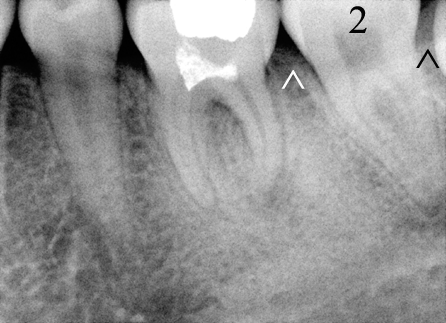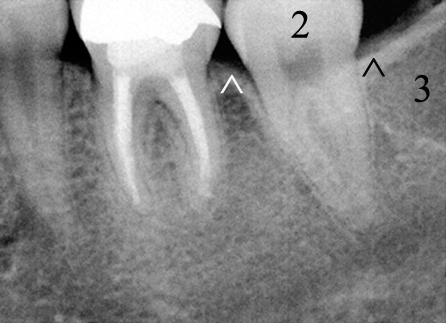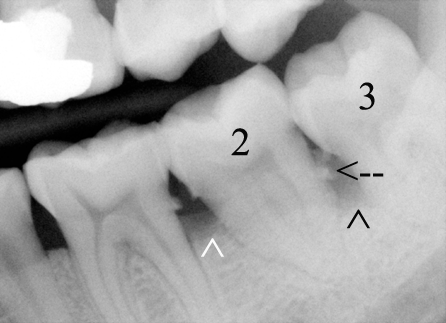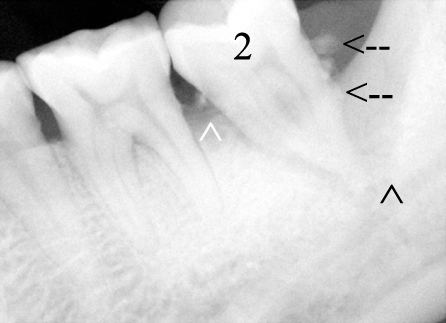 |
 |
|
Fig.1 |
Fig.2 |
 |
 |
|
Fig.3 |
Fig.4 |
 |
 |
|
Fig.1 |
Fig.2 |
 |
 |
|
Fig.3 |
Fig.4 |
Dental Education Lecture: Crocodile Tears
In early lecture (Fig.7-9), we discuss that gum condition of the second molar is easier to control if the 3rd molar is extracted before the age of 25. Today we use two cases to demonstrate the point.
Ms. Qiu has a bottom wisdom tooth removed at the age of 18. Before the extraction, X-ray shows the bone height in the front (white arrowhead) and back (black arrowhead) of the 2nd molar (2 in Fig.1) is normal. One year after the extraction, the bone height remains the same (Fig.2). The socket of the 3rd molar (3) is completely healed.
Mr. Gao in his thirties has severe gum disease, characterized by reduced bone height next to the 2nd molar (Fig.3) and a lot of tartar (arrow: <--). He needs deep cleaning and removal of the 3rd molar (3). He does not want the treatment, because he has no pain. Two years later, he agrees to have the 3rd molar removed, but still refuses deep cleaning. One more year later, he returns to clinic with complaint of loose 2nd molar. New X-ray shows that the bone drops quite a lot to the root tip in the back of the 2nd molar (black arrowhead in Fig.4) with formation of more tartar (arrows). Now he agrees to have deep cleaning done. It appears to be a little too late. It is very difficult to save the 2nd molar now. His procrastination has let germs take advantage. Crocodile tears.
Xin Wei, DDS, PhD, MS 1st edition 11/15/2009, last revision 12/20/2009